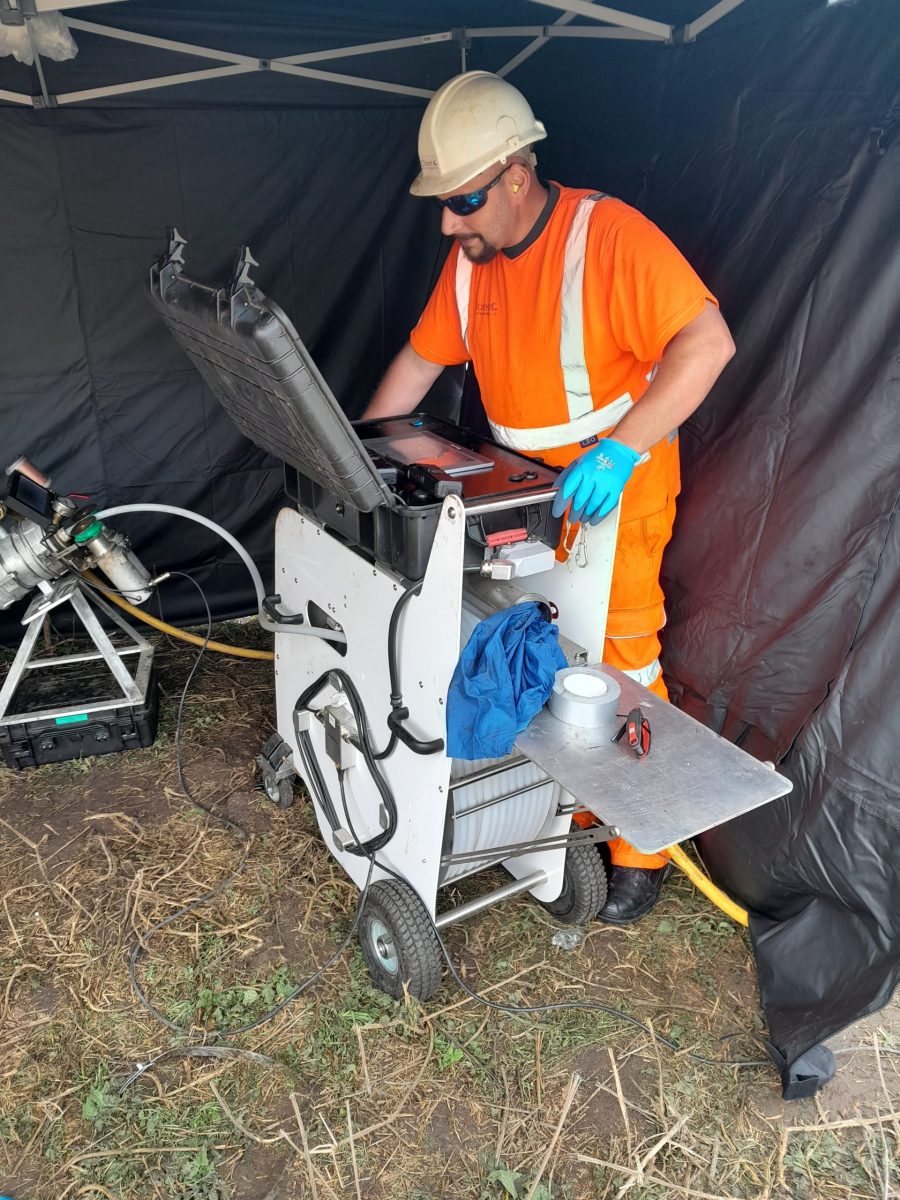Claret Civil Engineering – Interceptor Removal
Drainage interceptors/Buchan/Winsor traps were originally installed to prevent sewer air from venting within domestic systems at a time when the authorities were unsure of the health risks and dangers that this foul air may carry, even at the time there were those who opposed the installation of the traps because they cause waste matter to sit in the outlet of a chamber until the next flush.
It was therefore left to individual authorities whether they specified the installation of traps or not and for this reason they are common in certain parts of the UK on houses of a certain age, and not so common in others.
The initial thought was that the trap would prevent the foul air and rodents from leaving the sewer systems and surfacing within domestic properties and to some degree this may have been the case, however the traps created their own problems partly because they were often installed on combined storm and foul drainage systems and as a result silt and debris would collect in the interceptor causing blockages that occur often.
Drainage interceptors must be maintained regularly with expensive water jetting, which is used to clean and empty the inspection chamber and the interceptor, to ensure that internal flooding or pollution is prevented.
Since the transfer and adoption of private sewers back in June 2011, it has been the responsibility of the water authority of the area to maintain the private underground drainage that connect onto the public sewer, this included the maintenance and cleaning of interceptors.
With pollution and flooding high on water authority’s agenda’s, it deemed the sensible idea to remove interceptors as and when they created a problem. It mitigated any flooding or pollution incident and the need for expensive maintenance.
The removal of interceptors has developed over time. Originally, they were broken out of the inspection chamber and a short section of pipe would be inserted to bridge the outgoing pipe over the syphon that was part of the existing interceptor. This was then grouted in and benched back into the inspection chamber. Whilst this was an effective way of mitigating flooding and pollution incidents, it is also time consuming and can be quite intrusive for the customer with the materials and equipment required.
Here a Claret Civil Engineering, we have prided ourselves with innovation and new ideas for many years and are always at the forefront to looking at trenchless technologies (NO-DIG) to find solutions for repairing underground pipes.
For interceptor removal, we started taking them out using traditional techniques as described earlier. Our No-DIG trenchless team came up with the idea of coring through the existing interceptor with a core drill.
This leaves a hole through the interceptor and leaving the syphon at the bottom. This gap then needs to be bridged.
For many years, Claret have been involved with Cured in Place Pipe Lining which a technology by way of rehabilitating damaged sewer infrastructure with several techniques and materials to suit the condition of the pipe.
One of the methods we commonly use is an ambient cured resin saturated fibreglass patch lining which is wrapped around a packer and then inserted into the sewer and pulled into position to the defective area and then inflated. The packer presses the patch lining firmly against the host pipe wall. The packer stays in place for a short duration of time until the resins have gone hard. The packer is then deflated and brought out of the sewer leaving a structural segmental lining that has now given the host pipe a continued lifespan with little cost and little disruption.
This was the perfect solution for bridging the gap inside the interceptor, but we had to consider the void space within this area as the packer would also expand to this profile which could possibly burst the packer and result in a defective NO-DIG solution. The solution to make sure that we protected the packer & the patch materials from over expanding within this void space would be what’s called a stitched and welded calibration hose. This type of hose is generally used for another lining technique which is inverted through an ambient lining and then inflated with air or water to bring that new pipe to press against the host pipe.
The inversion calibration hoses are manufactured in several grades of PVC coated reinforced polyester fabric which are great against high temperatures (which the ambient patch resin will get to over 80° C), and great for keeping the packer and its materials inside of it without expanding into any void spaces we encounter. A simple but innovative use of experience, equipment, and materials capabilities.



